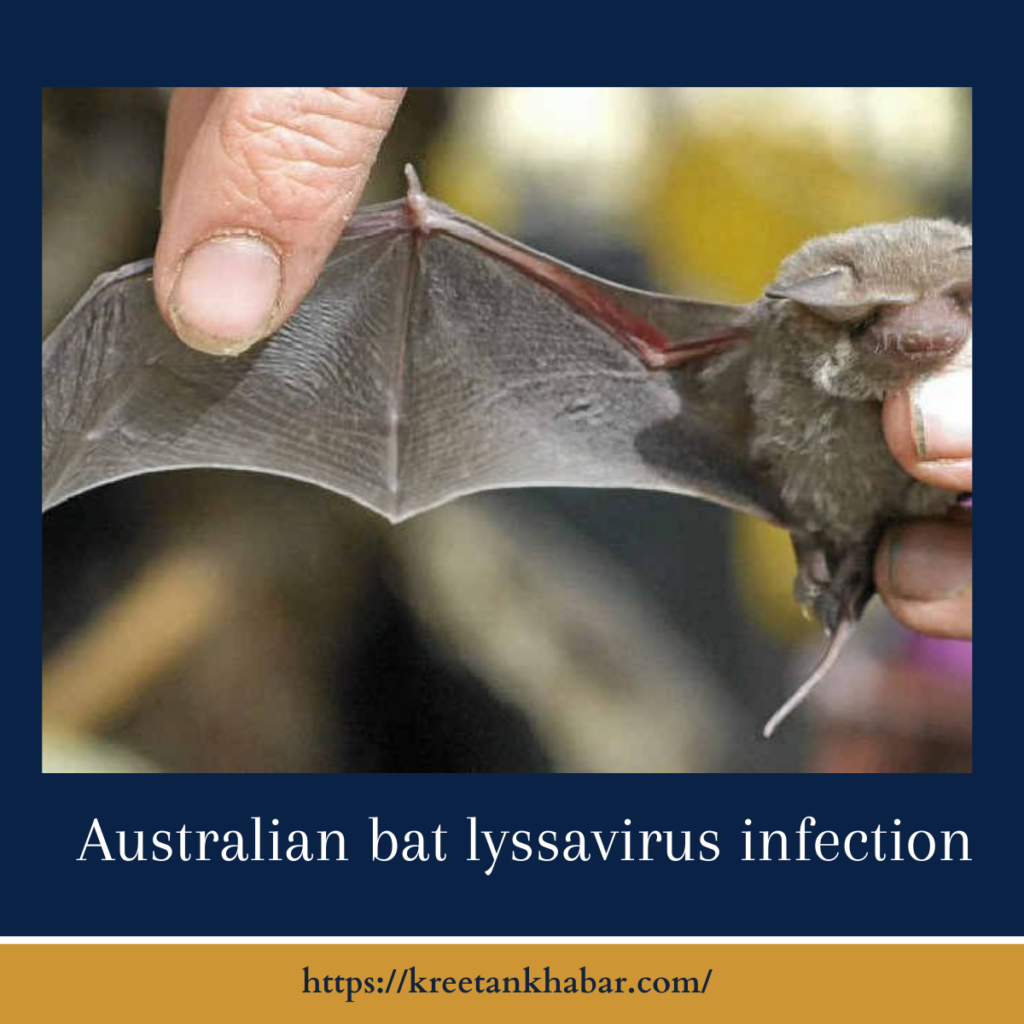Australian Bat Lyssavirus Infection
Introduction:
In the mosaic of infectious diseases, some remain shrouded in mystery, and the Australian Bat Lyssavirus (ABLV) is one such enigma. While not a household name, this virus carries a unique set of challenges, and delving into its intricacies can shed light on the subtle yet potentially serious threats it poses.

The Silent Presence of ABLV:
Australian Bat Lyssavirus, a close relative of the rabies virus, is harbored by flying foxes and certain species of bats across Australia. Despite its relatively low profile, the potential consequences of ABLV infection are far-reaching, making it a topic that warrants our attention.
Transmission Dynamics:
The primary mode of transmission is through bites or scratches from infected bats, with the virus present in the bat’s saliva and, to a lesser extent, urine. Human infection occurs rarely, but when it does, the consequences can be severe, leading to a progressive neurological condition.
Symptoms: A Gradual Unraveling
The symptoms of Australian Bat Lyssavirus infection unfold like a gradual unraveling, often resembling a sinister mystery. Initial signs may include fever, headache, and fatigue, making it challenging to pinpoint the cause. As the virus progresses, more severe neurological symptoms emerge, such as confusion, paralysis, hallucinations, and difficulty swallowing.
Prevention:
A Balancing Act
Preventing Australian Bat Lyssavirus infection is a delicate balancing act, especially for those who work closely with bats or find themselves in regions where these nocturnal creatures reside. Some key preventive measures include:
- Avoiding Close Contact: Steering clear of direct contact with bats, especially their saliva or bodily fluids, is a fundamental preventive measure.
- Vaccination for High-Risk Individuals: Individuals with occupations that involve handling bats, such as wildlife workers or veterinarians, may consider vaccination as an added layer of protection.
- Educational Initiatives: Public awareness campaigns about the risks associated with handling bats and the importance of seeking medical attention after potential exposure play a vital role in prevention.
- Rabies Pre-Exposure Prophylaxis (PrEP): Considering rabies PrEP for individuals at higher risk of exposure provides cross-protection against Australian Bat Lyssavirus infection .
- Prompt Medical Attention: If there is any suspicion of exposure, seeking prompt medical attention is critical. Post-exposure prophylaxis (PEP) can be administered to prevent the onset of symptoms.
Public Awareness and Misconceptions:
Public awareness about Australian Bat Lyssavirus infection is crucial, as misconceptions and fears can sometimes lead to unnecessary harm to bat populations. Understanding the importance of bats in ecosystems and the need for responsible interactions can contribute to a more balanced approach.
Conclusion:
Shining a Light on the Shadows
In the shadows of our awareness, Australian Bat Lyssavirus infection quietly persists, demanding a nuanced understanding and a cautious approach. By unraveling its mysteries, dispelling myths, and embracing preventive measures, we can navigate the shadows with a clearer vision. Australian Bat Lyssavirus infection , though rare, serves as a reminder of the intricate connections between wildlife and human health and underscores the need for informed coexistence.
Read also : Exploring the Delightful Boost of the Green Tea Shot 2023